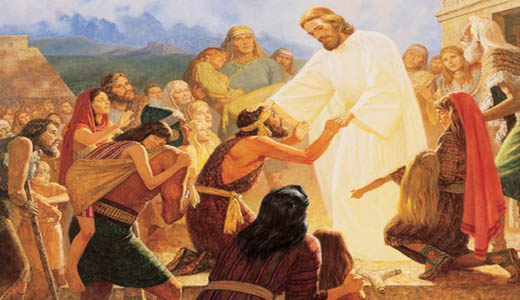
“There is one holiday, or more properly holy day, generally observed among Christians, the date of which is still set somewhat after the old Jewish reckoning. That is Easter, which comes near the time of the Feast of the Passover, being the Sabbath directly following the first full moon after the vernal equinox, which marks the beginning of spring. Among the Jews, this Feast was observed as a remembrance of God’s mercy on sparing them from the plague of death that was visited on the Egyptians, and also to remind them of the Savior to come, typified by the “Lamb without spot or blemish.” Among Christians, the season is still kept as a remembrance, but its significance has changed. It is now observed in commemoration of the greatest event in the history of mankind—the breaking of the bands of death by that Savior so long looked for by the Jews, yet unrecognized by that nation when He came. Only a comparative few of the chosen people had accepted His message; the rest looked on Him as a false prophet, a usurper,–even a blasphemer, because He had proclaimed Himself as the promised Messiah.”
These words found in a 1912 Young Woman’s Journal article, remind us of the origin of Easter, and cause us to contemplate the true message of the season. What did the Jews think of this promised “Great Deliverer”? Even those who did follow him may have thought that he failed miserably in his mission. The thought is posed, “Even among the disciples, some doubt existed; they strove to keep their faith, but nevertheless felt that they were left groping in darkness. John tells us that ‘As yet they knew not the scripture, that He must rise again from the dead.’ (John 20:9).” Indeed, darkness spread throughout the world, both physically as well as mentally.
Even though there was darkness, fear, and disappointment, another article, from a 1941 Relief Society Magazine, reviews America’s first Easter.
“In the land of the Nephites, the first Easter dawned likewise after a sad and gloomy period. The three days in which the Savior lay in the rock tomb were days on this hemisphere of the direst destruction ever to come upon mankind.” A multitude gathered at the temple. Why? The article suggests that they were looking for the Lord they knew would be coming and the temple was the logical place He would come to.
Even still, it took them three times before recognizing that someone was speaking. “Behold my Beloved Son, in whom I am well pleased, in whom I have glorified my name—hear ye Him.” As Jesus introduced Himself as the one the prophets had foretold the astonished people fell to the earth in worship. As He stretched His palms out toward them, they filed along, one by one, to feel the prints of the nails in His hands and feet. All two thousand five hundred souls. With one accord they shouted, “Hosanna! Blessed be the name of the Most High God!”
After teaching them the “new law” from the Sermon on the Mount, He rose to go and attend to other lost tribes of Israel. The people begged Him to stay longer, which He answered by calling for all those who were sick or afflicted. After healing each one of them, He called for the little children. As He prayed with the children around Him, no words were recorded because of the preciousness, sacredness, and tenderness of that plea. “No tongue can speak, neither can there be written by any man, neither can the hearts of men conceive so great and marvelous things as we both saw and heard Jesus speak; and no one can conceive of the joy which filled our souls at the time we heard him pray for us unto the Father.” (3 Ne 17:17)
Can we imagine ourselves there among the Nephites? Would we be there recognizing the miracle that was taking place; the fulfillment of prophecy from the beginnings of the earth; the Savior indeed fulfilling His divine mission with everlasting success?
Along with this final testimony, I add my own voice, “Let us keep the spirit of Easter in our hearts, and try to be at all times awake to the duties required of God’s children. The rewards of the faithful are great, but they may be summed up in Christ’s beautiful words, “I am the resurrection, and the life; he that believeth in me, though he were dead, yet shall he live: And whosoever liveth and believeth in me shall never die.”
“Easter”, Young Woman’s Journal, Vol 23, 1912, by Sterling B. Talmage
“America’s First Easter”, Relief Society Magazine, Apr 1941, by Isaac B. Ball, Patriarch of Oakland Stake
Painting called “And He Healed Them All Everyone” by Gary Kapp